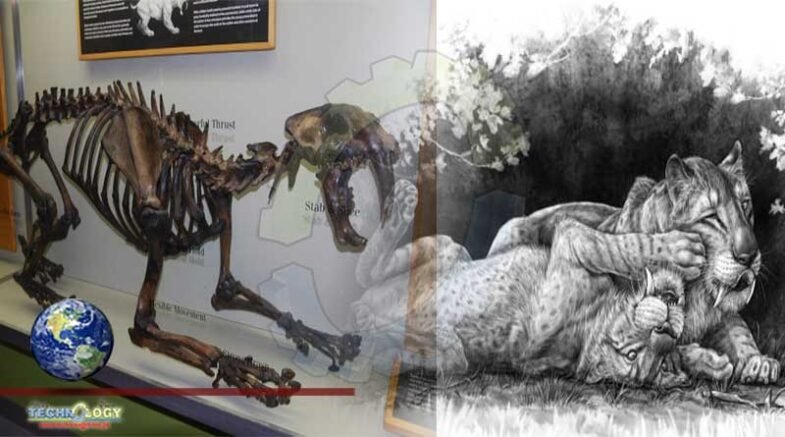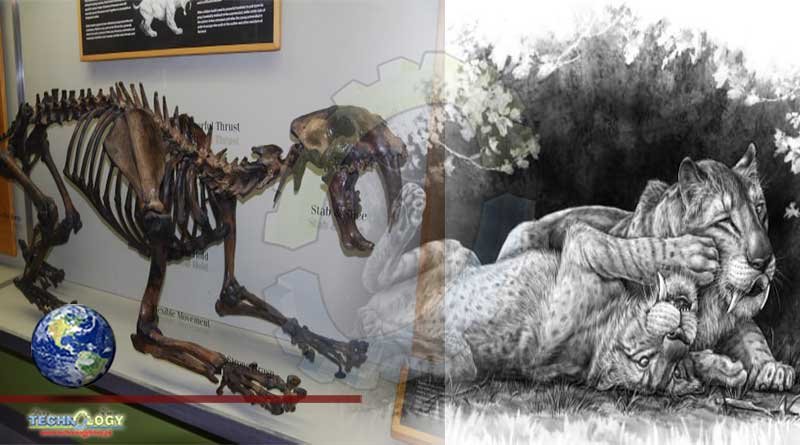The discovery of a family of saber-toothed cat with a unique genetic quirk hint at how the renowned predators thrived many years ago.

Canadian study finds a family of Smilodon fossils originally excavated in Ecuador.
The discovery of a family of saber-toothed tigers with a unique genetic quirk hint at how the renowned predators thrived tens of thousands of years ago.
What Are Saber-Toothed Tigers?
According to National Geographic, smilodon fatalis was one of the most fearsome predators that ranged in what is now the American West until roughly 10,000 years ago. The saber-toothed cat is the second most common mammalian fossil found in California’s La Brea tar pits, says UCMP Berkeley.
Saber-toothed cats are well-known for their dagger-like canines protruding from the sides of their mouth. These giant cats are one of the most iconic Ice Age mammals in North America.
Of the three known saber-toothed cat species. The Smilodon fatalis is the most wholly known, with thousands of well-preserved specimens collected from asphalt seep deposits in California.
Studying the Smilodon Fatalis
A new study by researchers from the Royal Ontario Museum in Toronto, published in iScience, may reveal distinct genetic quirks of the saber-tooth cat family.
Researchers analyzed fossils of almost fully-grown individuals that weighed 132 and 141 kilograms, roughly the same size as a fully grown modern lion or tiger. However, despite their size, researchers believe that these specimens weren’t completely independent adults.
“What we’re seeing here is the first evidence to back up this idea that they were probably with their mother at two years old,” says Ashley Reynolds, lead author of the study.
Unlike modern tigers that set out on their own to establish territories at a similar age, findings suggest that saber-tooth cats were more social animals than previously known.
1960s Fossil Excavation
The examined saber-toothed cat fossils were among 4,000 species excavated by the Royal Ontario Museum in Corralito, Ecuador.
Because the fossils were dug up many years ago, researchers were unsure how old the fossils were, ranging from 150,000 to 11,000 years ago. A total of 58 Smilodon fatalis fossils were discovered but whether they were from different specimens was unknown.
What set the two saber-toothed fossils from the rest is their teeth. According to researchers, both specimens had an extra premolar that can only be found in 5% of saber-toothed cat jaws.
Because of its rarity, researchers suggested that the two cubs belonged in the same litter of cubs.
“The coolest thing is that we have evidence that we have siblings,” says Reynolds. She explains that finding evidence of siblinghood in fossils are extremely rare, often involving newborns or eggs.
Originally published at Science Times
